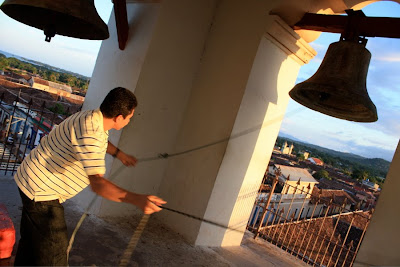With New Year fast approaching I've realised that its been almost 3 weeks since the last blog post. How very slack of me. But I blame my British friends and litre bottles of rum that cost only £2 - a lethal combination and one that seriously dents productivity!
Well, Happy Christmas everyone! As I sit here on Margarita island, just off the coast of Venezuela, our time in Panama seems an age ago. Still, its next on the list of blogs to catch up on so I'll do my best to remember what went down!
Arriving on a bus into Panama city late one evening we found ourselves in a huge shiny mall that would rival anything the US has to offer. It had every shop you could think of plus a huge food court full of all sorts of unhealthy dishes. Another out of place bubble, this surely wasn't representative of the 'real' Panama city. And we were right. Panama city is a real contrasting mix of wealth and poverty.
After leaving the mall we realised that we had properly caught up with the backpacker trail. The place to stay was in an area called Casco Viejo and more specifically, a hostel called Luna's Castle. Unfortunately the hostel was full and all they could offer was a place on the waiting list, forcing us to stay in a nearby hotel which was neither cheap or pleasant. In fact, it was pretty bleak (as you can see from the photo) but it had air conditioning which is a real plus in a very humid Panama city.
The next day we managed to check into Luna's so all's well that ends well. It had a great atmosphere and you couldn't help but talk to someone new every time you entered the kitchen. It was also the most trusting place I've ever stayed in. A notice on the front entrance told any late arrivers to come in and kip in the theatre downstairs - oh and to feel free to use the internet too, should they wish. The beer fridge was always open and you were trusted to pay reception whenever you took one.
Casco Viejo has so much potential, and by the number of renovation projects going on, they're on their way to fulfilling it. Almost every building in the area is beautiful, the only variation being whether it has been recently fixed up or is still a shell. Police patrol the area 24/7 and at night you feel very relieved that is the case -this wonderful area of colonial buildings shouldn't be a 'no-go' area after dark.
Panama city is felt like the biggest city we've been in since Mexico. It is a vast spread of markets, hotels, tall buildings and slums. The Manhattan-like skyline was as surprising as it was impressive. But the highlight of a trip to Panama city has to be the Panama Canal. Everything about it makes your jaw drop. Its a magnificent feat of engineering and the history of its creation is fascinating. Watching these huge container and cruise liner vessels being raised and lowered by a series of locks is impressive enough, but they've also a museum to learn about the history and remember how many people died to create it.
With some of the large vessels paying up to $250,000 to cross from one ocean to another, it is obvious how important the canal is to Panama - they're in the process of building new locks to increase capacity. If they put the money in the right places, Panama city could be great. It certainly has the potential.
Country Notes and Tales From Travellers
13 years ago





















































